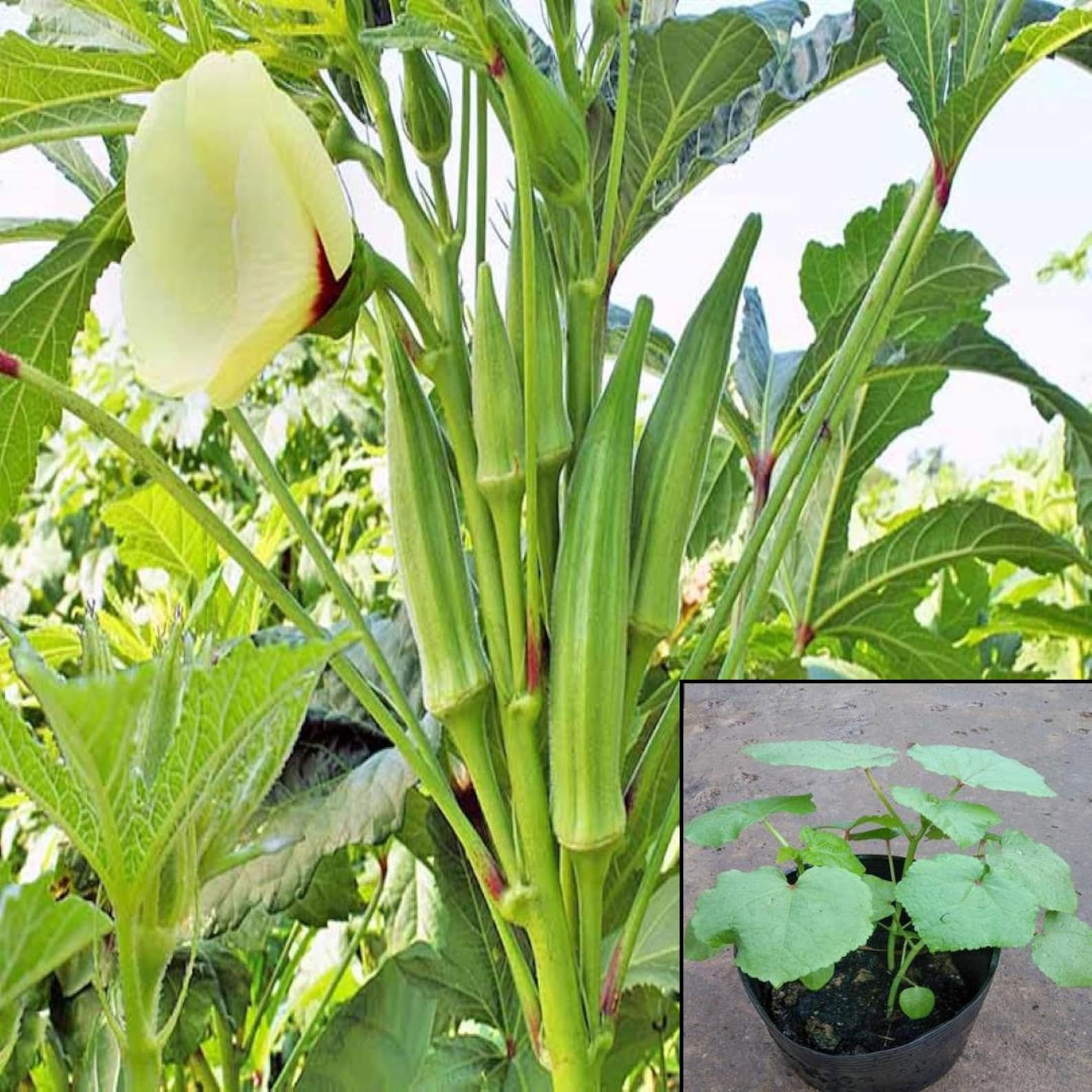
Keep the okra’s leaves dry when watering it, or only use sprinklers at night. If the soil appears dry, water it to keep it moist. If the soil does not appear to be dry, there is no need to water it. The most common rule when gardening in your home is to examine the soil by rubbing it to determine whether it’s wet or dry. The morning is the ideal time to water it since the plant can use it throughout the day. However, it thrives when provided with plenty of water all through the summer. Every morning, water thoroughly to dampen the soil, excluding when heavy rains occur. Okra must be provided at least one inch each month of fresh water. Lady finger plants love moist soil, so it’s important to water it and ensure it’s never enough water regularly. Okra blooms are “self-pollinating,” and do not need to be pollinated manually. Okra flowers are white or pale yellow with a reddish center beautiful. The flower buds of a lady’s finger begin to show up between the 3rd and 4th week following flowering. Its flowers themselves are stunning and can be cultivated for one purpose solely. If they are crushed, then the seedlings won’t expand. When you transplant seedlings, don’t cut the tiny taproots.Sprinkle water on the seedbed immediately using a gentle shower or a watering container.The seeds should be pushed into the soil medium using your fingers, then cover them with soil.Gently apply the soil to the base of the plant. On beds that are raised in raised beds, plant 2 seeds per space of 2 feet x 2 feet.Seed your seeds 4 inches (10.2 cm) apart with a depth of 11 2.The gap should be 5 inches required between the other pair of seeds. Place 2 seeds in the center of the pot.Fill containers with an appropriate layer of potting soil and a suitable growing medium.
#Full grown okra plant full

Start by asking your friends for their opinions or reading reviews of customers when you are purchasing online. We recommend purchasing seeds from a reliable seller. In any case, you need to work the soil until it reaches 12 inches (30.5 cm) and then works on 4 inches (10.2 centimeters) in compost or fertilizer with the garden rake to ensure that the fertilizer is evenly spread. It is possible to improve the soil using compost, organic fertilizer bags, or slow-release fertilizer. It is also possible to include a few neem leaf cakes to prevent pathogens and fungi from infecting the soil. Therefore, a suitable growing medium or potting soil for a lady’s finger would include 40% garden soil, 25% cocopeat, and 35% compost. If you’d rather not alter the pH of your soil by any drastic methods, you can mix in lots of compost, which will increase the pH to neutral or 7. You can use bone meal or limestone to raise the pH of the soil. Examine the soil’s pH to see if you’re in the appropriate pH range. Okra thrives best in soil with a pH between 6.5 to 7.0. Okra takes off at the height of summer when the sun is beating down on the garden at its most intense. The three principal growing months for okra are the months of February through April, June-July, and October to November.ĭon’t be concerned about getting too hot. Place the plant in an area with 5-6 hours of sunshine.Īpril is usually good for cultivating and growing okra in your garden. Planting it in a shaded area will not produce any fruit. However, if you reside in warmer climates, you can plant them directly in the open. It may be best to start okra in pots if you live in a temperate area, since frost could harm the pods. They include:Ī lady’s finger is the best option if you’re a gardening novice looking forward to the summer months. Different names around the world also know ladies’ fingers. Some may find it somewhat unpalatable due to the slime within the pod.īefore we get into the subject, we must make it obvious that different kinds of lady’s fingers can be grown. The leaves growing on the plant are also edible, and the seeds that have been roasted are used to make coffee. The vegetable is cooked and eaten in various ways throughout the world. It is composed of water (90 percent) as well as protein (2 percent) as well as carbohydrates (7 percent). It’s also low in calories and contains around 25-40 kcal for 100 grams. It’s a vegetable with a warm season-high in vitamin C, vitamin K, vitamin A, and fiber and calcium. It is grown throughout the Mediterranean, Central America, and Caribbean regions. There is a belief that the roots of okra are from West Africa and South Asia. Lady finger, more commonly known as okra, is a botanical species called Abelmoschus esulentus and is part of Mallow’s family.


#Full grown okra plant how to
Okra is actually among the top plants to plant in your garden! Learn how to grow okra and start enjoying this vegetable soon.


 0 kommentar(er)
0 kommentar(er)
